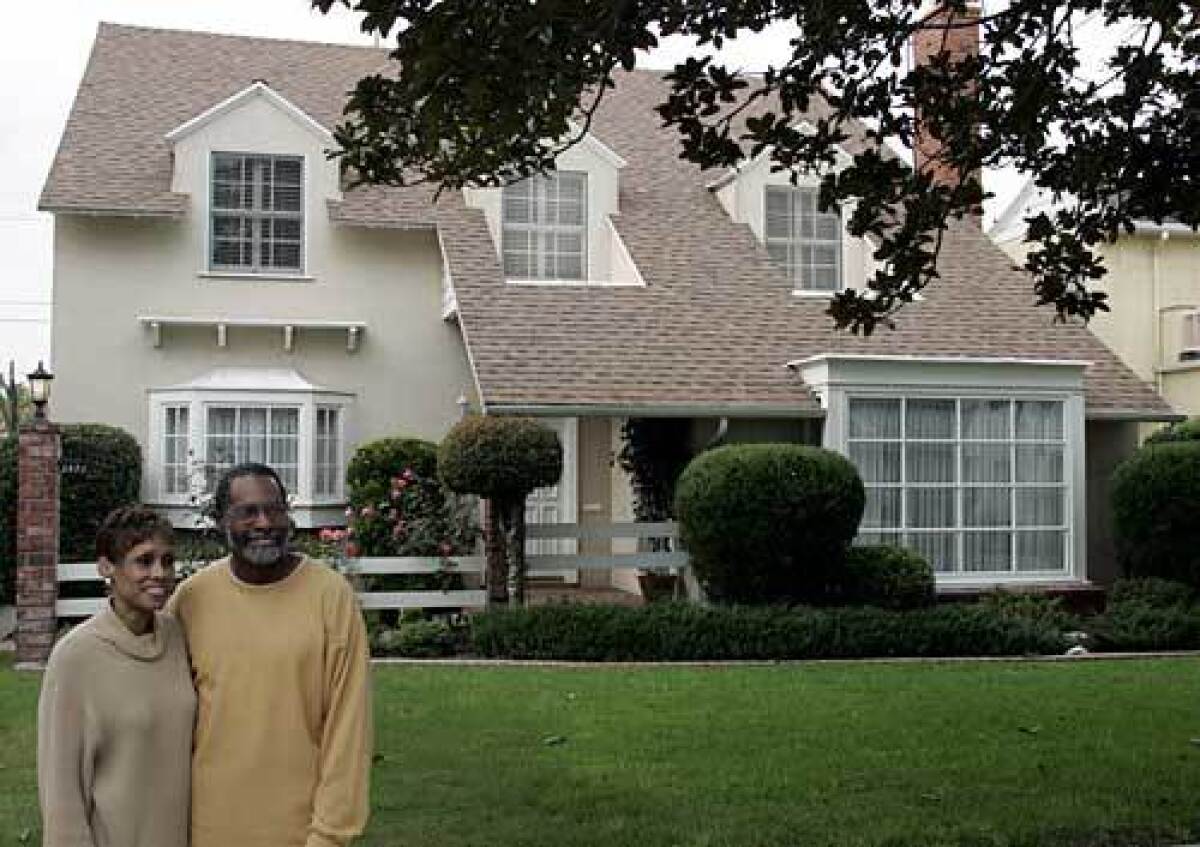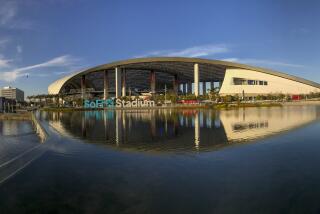Activism, music intersect in Leimert Park

Beginnings
Developed in 1927 by the Walter H. Leimert Co., a Los Angeles-based real estate firm that’s still in business, this neighborhood began as a self-contained complex of homes, apartments and businesses, complete with a plaza-like park on the southwestern boundary.
Insider’s viewpoint
Although predominantly African American, Leimert (rhymes with alert) Park is also home to Asian retirees, an increasing number of Latinos and a sprinkling of whites.
The neighborhood straddles Martin Luther King Jr. Boulevard, and is roughly bounded by Roxton Avenue on the east, Crenshaw Boulevard on the west, Rodeo Road on the north and Vernon Avenue on the south.
It is known for Leimert Park Village, the cultural heartbeat of black Los Angeles — and home to the annual Kwanzaa Heritage Festival, being held next weekend.
What’s it about?
“When the black community wants to speak out or send a message about something, quite often they come to Leimert Park to make that statement,” said bassist and businessman Trevor Ware, while savoring a cup of chai tea at 5th Street Dick’s Coffeehouse.News conferences are often held at the Lucy Florence Coffeehouse on West 43rd Street or in triangular Leimert Plaza Park, with the backdrop of a fountain, benches and, on some weekends, African drummers.
A candlelight vigil for condemned murderer Stanley Tookie Williams was recently held in the park on the eve of his execution. When Rosa Parks, considered the mother of the civil rights movement, died in October, mourners gathered there to honor her memory.
And then there is the music. Jazz at the World Stage. Blues at Babe’s and Ricky’s Inn.
“I learned to play bass here, right here in this neighborhood, from Billy Higgins and Horace Tapscott, some of the fathers of this artistic community. You can walk down the street and see poets standing next to musicians,” Ware said, describing Degnan Boulevard.
A community activist, Ware founded a nonprofit group that with the city’s help is renovating the Vision Theater, the village’s original movie theater.
Ware lives in a Leimert Park duplex with his wife, Velma, and 7-year-old son, Brandon. He also owns a triplex nearby and has called the community home for nearly two decades.
Good news, bad news
“Everything we need is here,” said 34-year resident Marilyn Ezell. “I would think this is how Harlem was in the old days. We have jazz clubs, art galleries and museums. My church, West Angeles Church of God in Christ, is less than a mile away.”
Ezell is a retired facilities design manager; her husband, Bill, is a retired banker.
In 1995, they paid $248,000 for their two-story house, which belonged to singer Ella Fitzgerald, according to her biography, when Ray Charles lived across the street. Comparable homes in the neighborhood today are selling for three times the amount the Ezells paid.
Trevor Ware longs for a Trader Joe’s and a Carl’s Jr., but he also applauds the new development along Leimert’s Crenshaw boundary, which will include, among other shops, a Starbucks, a Big 5 Sporting Goods and a Denny’s.
Bill Ezell dislikes the increasingly congested traffic fueled by drivers who use the surface streets of Leimert Park as shortcuts to LAX, USC or downtown L.A.
When asked about crime, he said, “We’ve never had a break-in.”
Violent crime is down in Leimert Park, as it is throughout the city, said Capt. James Craig of the Los Angeles Police Department.
Leimert Park and the surrounding area patrolled by the Southwest Police Station lead the city in the drop in property crime since last year, Craig said, adding that there is no pervasive gang problem in the neighborhood.
The recent murder of a teenage boy at a carnival not far from the northeastern boundary of Leimert Park was an isolated case, according to police.
Housing stock
Pastel Spanish-style stucco homes with red-tile roofs are interspersed with traditional houses on streets lined with mature trees — magnolia, palm, eucalyptus, maple and pine.Most homes, built between the late 1920s and early 1940s, according to Patricia Penny and her daughter Penny Williams of Pat Penny Realtors, have lots of character and details such as hardwood floors, crown moldings, curved ceilings and arched doorways.
There are many two-bedroom homes in the neighborhood. Around Hepburn and 6th avenues, there are larger, two-story houses.
If some of them resemble the houses in Hancock Park, it’s because they share the same designers, including Richard Neutra and Sumner Spaulding. Paul R. Williams designed the nearby Angelus Funeral Home on Crenshaw Boulevard.
Report card
On the 2005 Academic Performance Index Growth Report, Tom Bradley Environmental Science & Humanities Charter Magnet scored 724 out of a possible 1,000; Audubon Middle School, 578; and Dorsey High School, 501.
Historical values
Residential resales:
Year...Median price
1990...$145,0001995...$144,000
2000...$173,500
2004...$364,900
2005...$465,000*
*Year to date
Sources: DataQuick Information Systems; Life magazine; api.cde.ca.gov/.






